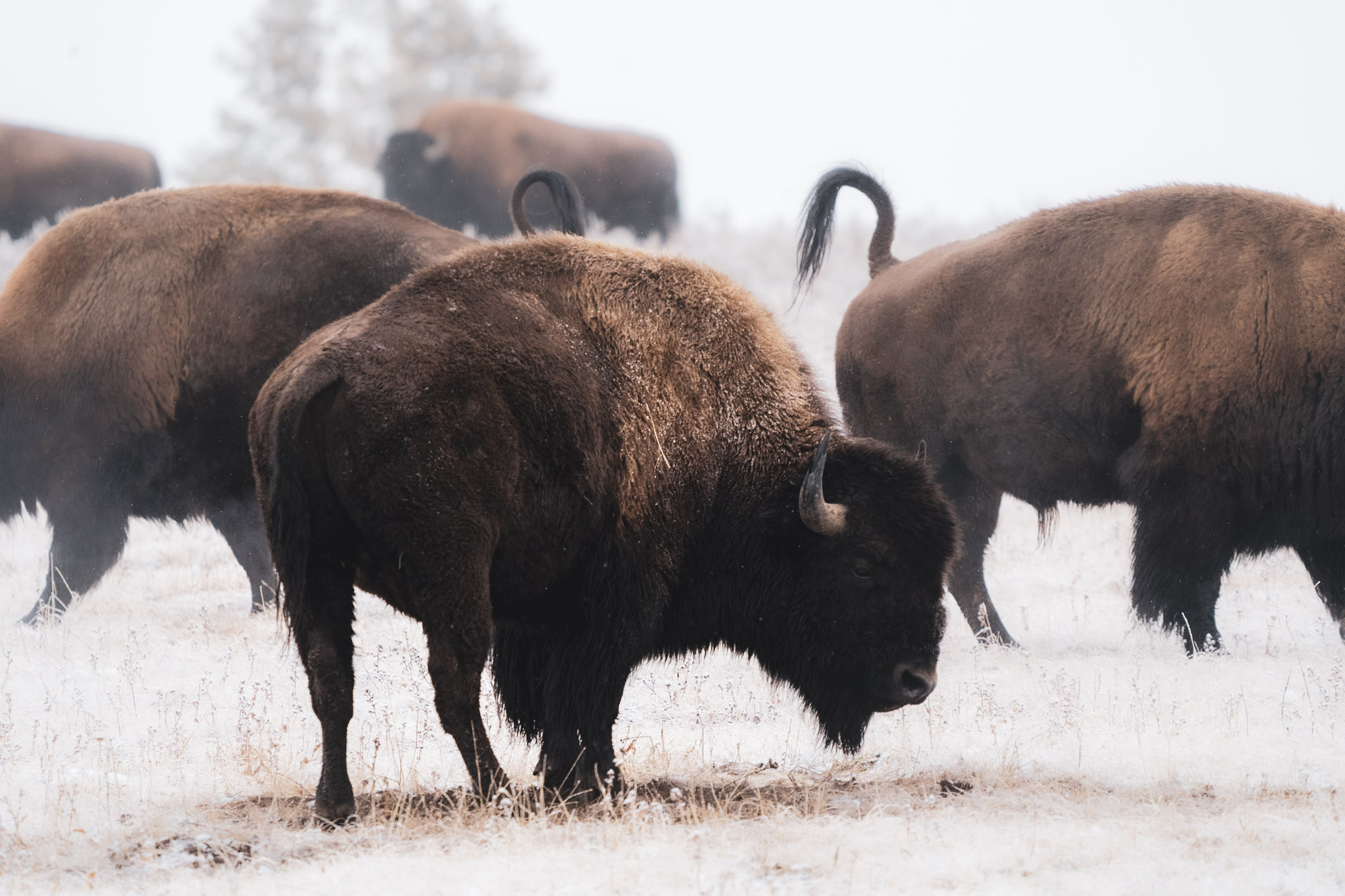
- Details
- By Darren Thompson and Elyse Wild
Roam Free Nation and Alliance for the Wild Rockies, both Native-led and Montana-based conservation groups that advocate for wild buffalo, wildlife, and wild lands, say recent documented losses result from mismanagement of wild bison herds.
Yellowstone National Park is home to two buffalo herds — the Central herd in the park's Hebgen Basin and the Northern herd in Lamar Valley.
National Park Service (NPS) spokesperson Morgan Warthin told the Cowboy State Daily that this season saw an unprecedented number of bison leaving the park.
"The winter of 2022/2023 has been the largest migration out of the park in recent history (decades)," Warthin said. "Likely due to heavy snows and very cold temperatures causing large numbers of bison to move to lower elevations in the Gardiner Basin to find food."
The migration has pushed herds beyond Yellowstone's protected boundaries and into Montana, where bison hunting remains legal — and where the animals can possibly carry brucellosis, an infectious disease that can pass from bison to cattle.
According to the most recent report from Interagency Bison Management Plan (IBMP) — a multi-agency bison management effort launched in 2000 — 1548 of Yellowstone buffalo — or 25% — have been removed, with 1,172 killed this season. Some area tribes manage hunts and numbers may increase.
The IBMP report breaks down the season's population decline as follows:
- 1,548 buffalo have been removed from the population – 25% of the population
- 282 buffalo were sentenced to a life of domestication and captivity through the quarantine program
- Mismanagement actions killed 1,266 – 21% of the population
- 1,172in the hunt
- 88 shipped to slaughter
- Six deaths in the trap
These numbers do not include winterkilled buffalo or those who died on the roadways.
The impact, says Roam Free Nation, can already be seen.
According to the organization's statement, the Hebgen Basin typically floods with buffalo by the end of March as the animals travel to their calving grounds on and around the Horse Butte. But so far, the basin is seeing just a fraction of buffalo moving through it.
"There were so many buffalo taken from both herds because of the terrible mismanagement and the long, hard winter," said Jaedin Medicine Elk, cofounder of Roam Free Nation and Northern Cheyenne tribal member. "We're used to seeing way more buffalo migrating out of the Park towards Horse Butte by this time of year. Advocates and locals are very concerned."
Yellowstone National Park has been involved in the protection and recovery of bison since its foundation in 1902. After the federal government sanctioned the mass killing of bison in the 1800s to cut off Indigenous people's primary source of sustenance, fewer than two dozen wild buffalo were left in Yellowstone National Park. Over the last 100+ years, the buffalo herd has grown, making it difficult to manage the population.
Advocates are calling on the state of Montana and tribes to stop yearly hunts and allow the population to grow.
"Now that bison calves are being born, it is time for the State of Montana and tribes to stop the slaughter of bison in the Beattie Gulch hunting trap," said Alliance for the Wild Rockies' Executive Director Mike Garrity in a statement. "Bison are the only native species that are killed as soon as they step one foot into Montana, in spite of the fact that there has never been a confirmed case of bison transmitting brucellosis to cattle."
The Alliance for the Wild Rockies and Roam Free Nation have put up eight billboards around southwest Montana, reading, "There's no hunt. It's slaughter."
"As this deadly season winds down, we are angry at the loss of so many buffalo; we are frustrated with the games of politics played by humans that should be the buffalo's allies," said Cindy Rosin, board secretary for Roam Free Nation. "We are committed to speaking for the buffalo until they roam free. Now, we breathe the spring air, celebrate the arrival of the calves, and take their boundless energy with us to carry the fight on into the future."
To manage the buffalo population, NPS passively traps wandering buffalo in large pens to release them back into the park. This year, Yellowstone released 803 trapped bison.
According to the National Park Service, Yellowstone moved 55 bison to the Fort Peck Indian Reservation in northeastern Montana from August 19 through 23, 2019. It was the first direct relocation of bison to a new home as an alternative to slaughter. It was the culmination of eight years of compromise between the federal government, the state of Montana, and Fort Peck Assiniboine and Sioux Tribes.
The buffalo herds of Yellowstone country are the nation's last continuously wild, migratory bison. They are currently being considered for Endangered Species Act listing by the U.S. Fish & Wildlife Service, which accepts public comments on the matter through June 4, 2023.
Help us defend tribal sovereignty.
At Native News Online, our mission is rooted in telling the stories that strengthen sovereignty and uplift Indigenous voices — not just at year’s end, but every single day.
Because of your generosity last year, we were able to keep our reporters on the ground in tribal communities, at national gatherings and in the halls of Congress — covering the issues that matter most to Indian Country: sovereignty, culture, education, health and economic opportunity.
That support sustained us through a tough year in 2025. Now, as we look to the year ahead, we need your help right now to ensure warrior journalism remains strong — reporting that defends tribal sovereignty, amplifies Native truth, and holds power accountable.
 The stakes couldn't be higher. Your support keeps Native voices heard, Native stories told and Native sovereignty defended.
The stakes couldn't be higher. Your support keeps Native voices heard, Native stories told and Native sovereignty defended.
Stand with Warrior Journalism today.
Levi Rickert (Potawatomi), Editor & Publisher

